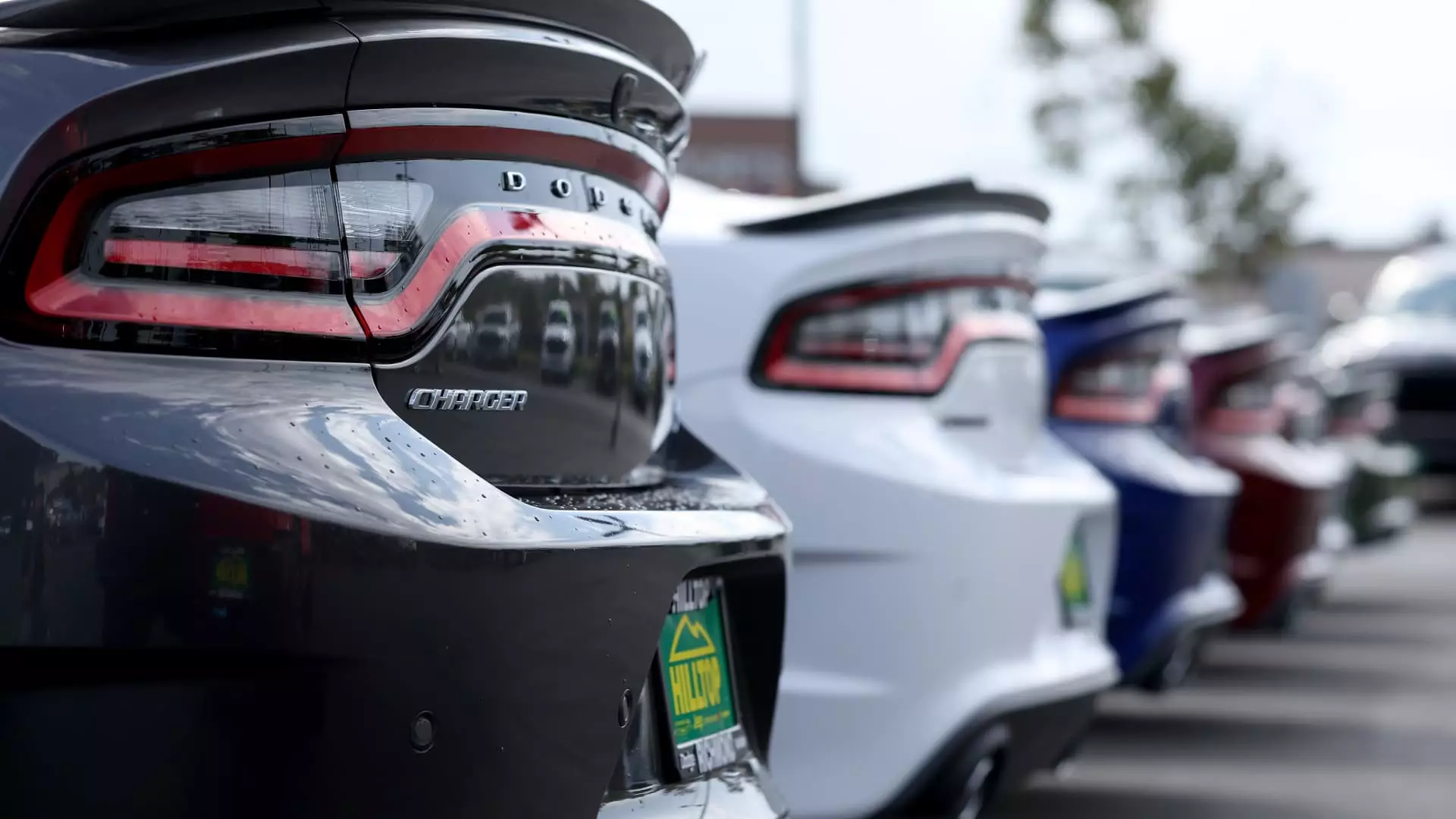The automotive industry is currently facing a crossroads, with European car manufacturers grappling with a slew of issues that have drastically altered their financial outlooks. Over the past week, two significant players, Stellantis and Aston Martin, have issued alarming profit warnings that reflect deeper, systemic problems within the sector. These statements highlight the varying challenges faced across the industry, particularly in relation to geopolitical tensions, supply chain disruptions, and the ever-looming competition from Chinese automakers.
Stellantis, the amalgamation of iconic automotive brands such as Dodge, Jeep, and Maserati, has found itself in turbulent waters as it revises its 2024 guidance downward. This adjustment stems primarily from deteriorating global industry dynamics and increased competition from Chinese automakers. The company’s forecast of an adjusted operating income (AOI) margin of 5.5% to 7.0% for 2024 is a sharp decline from previous expectations of a double-digit margin. This dramatic shift illustrates the mounting pressure faced by the company as it navigates a complex global market.
Increasingly, Stellantis has been forced to acknowledge that its sales are lagging behind expectations, particularly in the latter half of the year. The automaker’s stock plummeted by approximately 13% upon the announcement, mirroring the loss of confidence among investors. Analysts note that Stellantis’s grim outlook is exacerbated by a concerning decrease in industrial free cash flow, now projected to be between -5 billion euros and -10 billion euros. This marks a significant departure from prior expectations and highlights the urgent need for effective remedial strategies.
Moreover, Stellantis is not merely confronting external market pressures. It is grappling with internal challenges as well, as revealed by criticism from its U.S. dealer network regarding recent operational decisions. The compounded weight of poor sales performance, production cuts, and increased inventory levels paints a confusing picture for stakeholders and raises questions about the company’s strategic direction.
Aston Martin, the luxury carmaker renowned for its association with the James Bond franchise, is experiencing its own crisis as profit margins and production targets for the year were significantly cut. The company announced it would be scaling back production by nearly 1,000 units, attributing this reduction to ongoing supply chain disruptions and unfavorable macroeconomic conditions within China. The anticipated earnings before interest, taxes, depreciation, and amortization (EBITDA) for 2024 are expected to fall short of previous year’s performance, posing a significant threat to the brand’s longstanding prestige.
In the face of this chaos, Aston Martin’s shares saw a staggering drop of 23% shortly after the announcement. This decrease is indicative of the precarious position the company finds itself in, as investors remain wary of the brand’s ability to recapture market stability. The automotive manufacturer recognized its challenges, but also noted the potential for growth in the Chinese market once macroeconomic conditions normalize. This acknowledgment underscores the dual pressure of logistical hurdles while remaining attentive to profitable market opportunities.
The company’s March 2020 sharing of severe market distress recalls fears within the industry that the broader economic climate could decimate luxury vehicle sales as consumer behavior shifts. The anticipated struggle to maintain a gross margin above 40% adds further complication to Aston Martin’s operational landscape and poses vital questions about the brand’s sustainability.
The difficulties faced by Stellantis and Aston Martin are not isolated incidents but rather part of a much larger narrative affecting all European automotive manufacturers. A recent statement from Volkswagen, another heavyweight in the sector, indicated a reduction in its annual outlook amidst similar struggles. The challenges outlined by Volkswagen—diminished performance expectations for passenger and commercial vehicle brands—echo the sentiments across the industry.
The increased push from Chinese manufacturers into European markets, particularly in the electric vehicle (EV) segment, threatens to disrupt the established brands and complicate their recovery efforts. Research from industry analysts indicates this competitive pressure, combined with a general slowdown in new car sales that have yet to return to pre-pandemic levels, is creating a multi-faceted crisis for European carmakers.
The juxtaposition of Stellantis and Aston Martin’s challenges serves as a microcosm of the broader issues plaguing the European automotive landscape. Historical bastions of car manufacturing are at a crossroads, caught between the need for innovation amid rising competition and navigating complex geopolitical and economic challenges. The coming months will likely determine the future stability of these businesses and the industry as a whole.

